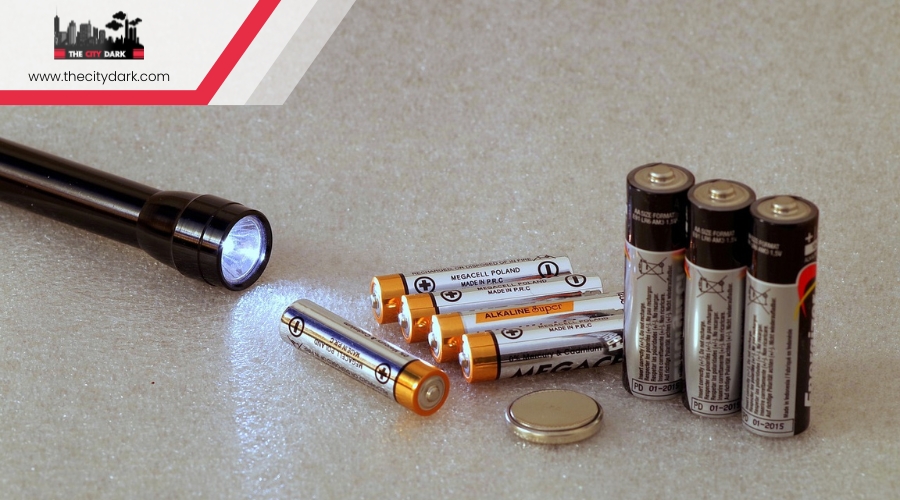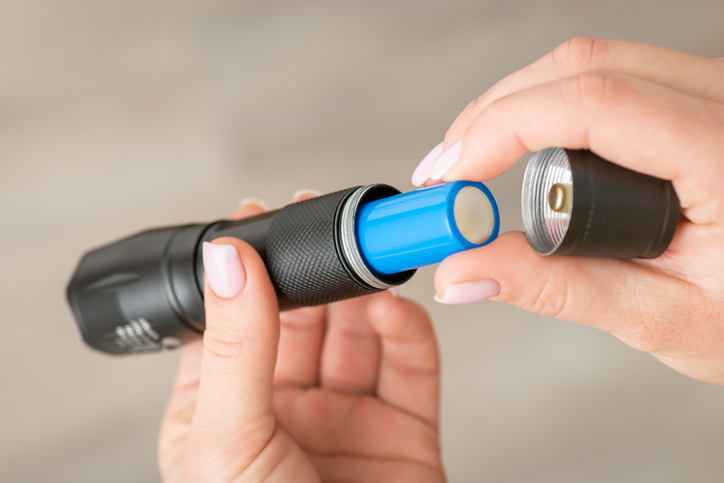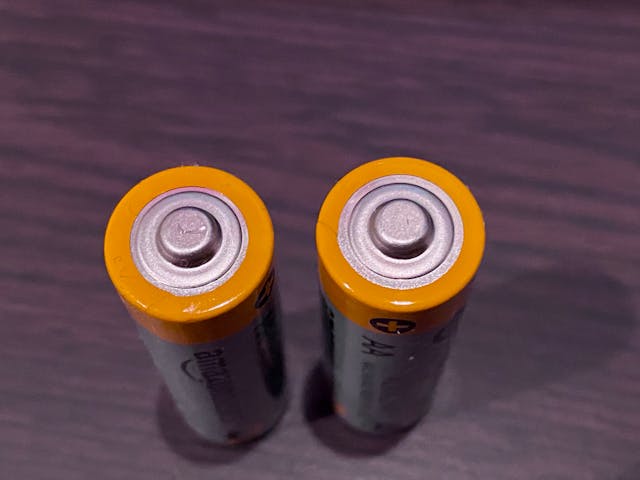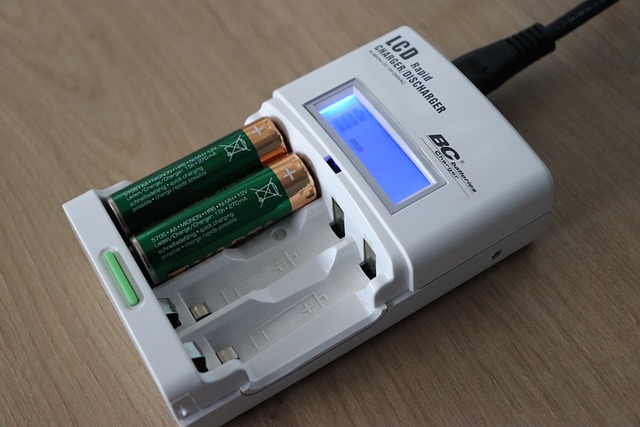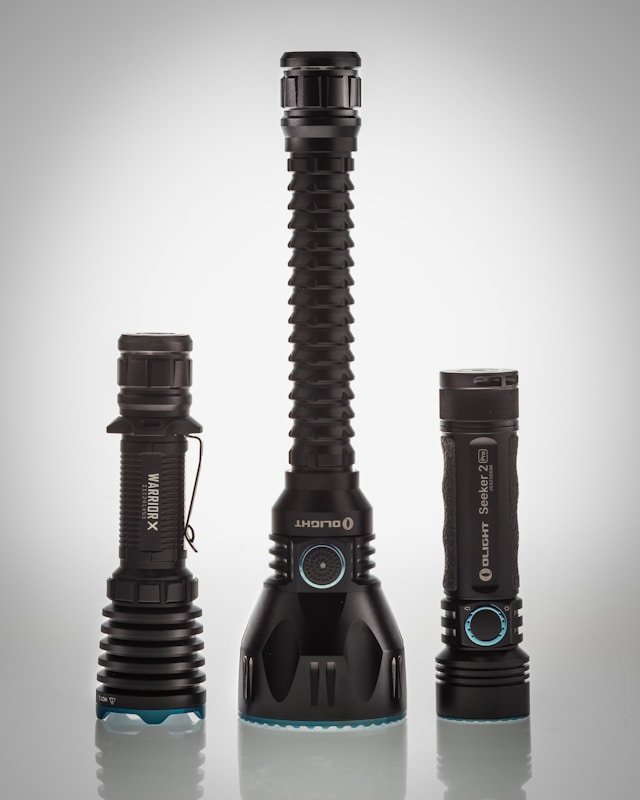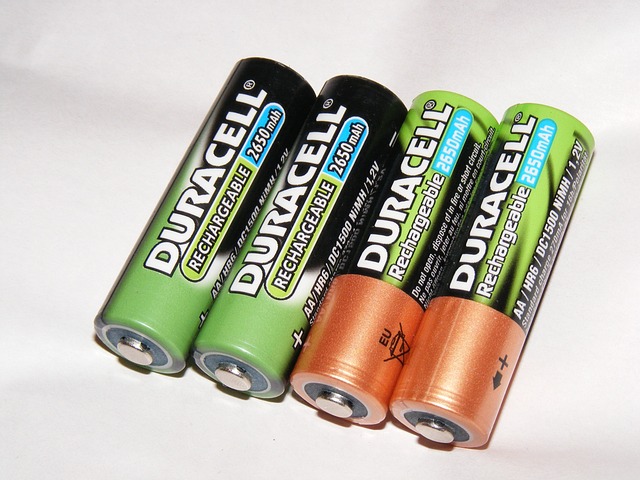Just as a seasoned explorer wouldn’t venture into unknown territories without a reliable map, you shouldn’t embark on your daily adventures without a dependable flashlight powered by the best-suited batteries. In the realm of everyday carry (EDC) scenarios, AAA and AA rechargeable batteries have emerged as frontrunners, offering a blend of cost-efficiency, eco-friendliness, and convenience that hard-to-beat.
However, the true potential of these rechargeable powerhouses can only be unleashed through proper storage and maintenance. From understanding the nuanced differences between NiMH and Li-ion batteries to implementing correct charging practices and safety measures, there’s a world of knowledge awaiting to optimize your flashlight’s performance and longevity.
Let’s illuminate the path to ensuring your flashlight is always ready to guide you through the darkest nights, starting with a closer look at what powers its beam.
Key Takeaways
- NiMH batteries have high capacity and are rechargeable, but they are bulkier and heavier compared to Li-ion batteries. They are also sensitive to extreme temperatures.
- Li-ion batteries have higher voltage and longer-lasting power. They are efficient and powerful, and they come in different sizes for different capacities.
- Proper storage techniques for batteries include finding a cool, dry place away from direct sunlight and extreme temperatures, using original packaging or dedicated battery cases, and storing batteries partially charged for long-term storage.
- When it comes to battery compatibility and power output, not all batteries fit universally across flashlights. It is important to match battery specifications with the flashlight for optimal functionality and safety. EBL batteries have a universal fit and can be used in different flashlights. Additionally, understanding power output variations is crucial for choosing compatible batteries for your flashlight.
Understanding Battery Types
To fully grasp your flashlight’s potential, it’s crucial to understand the different battery types available, such as Nickel-Metal Hydride (NiMH) and Lithium-ion (Li-ion), each offering unique advantages in capacity and voltage performance.
NiMH batteries, for instance, boast high capacity and the convenience of being rechargeable. You won’t have to keep buying replacements, which not only saves you money but also benefits the environment. They’re particularly great for devices like flashlights that you use frequently.
On the other hand, Li-ion batteries provide a higher voltage, ensuring your flashlight shines brighter and lasts longer on a single charge. These are the go-tos for high-performance needs, especially when you’re counting on that extra bit of brightness and endurance.
Remember, different flashlights may require different battery sizes, including popular AA and AAA options, as well as specialized formats like 18350 and 18650. While AA and AAA sizes are often found in household devices, including both Alkaline and rechargeable types, the larger sizes typically cater to more powerful flashlights.
Choosing between NiMH and Li-ion batteries depends on your specific needs. If you value rechargeability and high capacity, NiMH is your best bet. For those needing maximum power and efficiency, Li-ion won’t disappoint.
Pros and Cons of NiMH Batteries
Understanding the advantages and drawbacks of NiMH batteries is crucial for anyone relying on them for their flashlights.
One of the significant pros is their high capacity, making them a rechargeable battery choice that’s both cost-effective and environmentally friendly.
Unlike other rechargeable types, NiMH batteries have a lower self-discharge rate, meaning they’ll retain their charge for longer periods, enhancing your flashlight’s battery life.
However, it’s not all sunshine with NiMH batteries. They’re known to suffer from the memory effect if not fully discharged before recharging. This can impact their overall capacity over time, potentially shortening their useful life.
Moreover, compared to other battery types, they’re bulkier and heavier, which might affect the portability of your flashlight.
Additionally, NiMH batteries are more sensitive to extreme temperatures. This characteristic necessitates careful storage and usage to maintain their efficiency.
Li-ion Batteries Explained
Switching gears, let’s explore Li-ion batteries, known for their efficiency and power. You’ll find that understanding their chemical composition, charging best practices, and safety tips is crucial for maximizing their performance and lifespan. These batteries are a game-changer for your flashlight needs, offering a reliable power source when handled correctly.
Li-ion Chemical Composition
Li-ion batteries, the powerhouse behind modern flashlights, harness lithium ions moving between the cathode and anode to store and release energy efficiently. Their chemical composition is pivotal for their high voltage performance, surpassing other types like NiMH. These batteries come in various sizes, each tailored for different capacities and ensuring your flashlight shines brightly.
Here’s a quick guide to understanding Li-ion batteries:
| Size | Capacity |
|---|---|
| 18650 | High |
| 16340 | Medium |
| 14500 | Medium |
| 21700 | Very High |
| 26650 | Highest |
Charging Best Practices
To maximize your flashlight’s performance and battery lifespan, it’s crucial to follow best charging practices for Li-ion batteries. Unlike AA or AAA batteries, Li-ion ones, including rechargeable Eneloop batteries, offer higher voltage and require careful handling.
Using EBL chargers, which come with overcharge protection and intelligent charging algorithms, ensures safe and efficient charging. Always prioritize safety; EBL batteries are designed with this in mind, featuring robust safety measures to mitigate risks.
Safety and Handling Tips
Having covered the best practices for charging your flashlight’s Li-ion batteries, let’s now focus on the crucial aspects of their safe handling and storage. Always handle your batteries with care to steer clear of water, fire, or any physical harm. Exposure to extreme heat or extreme cold can drastically affect their performance.
For better performance and safety, store your batteries properly. It’s not just about keeping them away from temperature extremes; it’s about ensuring they’re in a dry, cool place. When your battery reaches the end of its life cycle, recycle it responsibly. Lastly, make sure the batteries you choose are approved before showing them to your flashlight.
Following these safety and handling tips ensures your flashlight functions optimally and safely.
Proper Storage Techniques
For optimal longevity and performance, it’s crucial you store EBL batteries correctly, following specific guidelines. Regardless of battery sizes, finding a cool, dry place away from direct sunlight and extreme temperatures is your first step. This environment ensures your batteries, from small AAAs to larger D cells, aren’t subjected to conditions that can degrade their quality.
Proper storage techniques also involve keeping EBL batteries away from high humidity areas. Moisture can cause significant damage, leading to leakage or corrosion, especially in primary cells designed for long-term use. It’s wise to use the original packaging or dedicated battery cases for storage. These precautions prevent short circuits and protect against physical damage.
Moreover, it’s not advisable to store batteries fully charged if you’re looking at long-term storage. Instead, ensure they’re partially charged. This practice maintains their health and readiness for future use.
Periodically, you should check your stored batteries for any signs of leakage, corrosion, or damage. Taking these steps guarantees your EBL batteries will be in top condition when you need them, maximizing both their performance and lifespan.
Charging and Maintenance Tips
Ensuring your batteries are charged correctly is crucial to prevent any potential damage. It’s important to always select a charger that’s compatible, especially when considering the battery size and the type of flashlight you’re using.
Batteries are great resources, especially during power outages, but only if they’re maintained properly. Here are a few charging and maintenance tips to ensure your flashlight batteries last longer and perform better:
- Regularly Check Your Batteries: Inspect them for any signs of damage or leakage, and ensure they’re always charged, especially before an expected power outage. This simple habit can significantly extend the life and reliability of your batteries.
- Avoid Overcharging: Overcharging your batteries can reduce their lifespan. Make sure you’re following the manufacturer’s guidelines for the correct battery charging time.
- Store Properly: Keep your batteries in a cool, dry place away from direct sunlight and extreme temperatures. Extreme conditions can degrade battery quality and performance over time.
Safety and Handling Guidelines
After covering the basics of charging and maintaining your flashlight batteries, it’s crucial to focus on how to safely handle and store them to avoid any risks. Always handle batteries, especially EBL batteries, with care. You must avoid exposing them to water, fire, or physical damage to ensure they remain functional and safe. Proper storage methods play a significant role in maintaining battery performance.
When a battery reaches the end of its life cycle, it’s important to recycle it responsibly, following the safety and handling guidelines provided.
EBL batteries come equipped with safety features, but you still need to take precautions. Always prioritize safety when charging these batteries. Following proper charging practices not only prolongs the battery lifespan but also ensures your flashlights perform optimally. Confirming the required battery size, voltage, and chemistry recommended by the flashlight manufacturer is crucial.
Using compatible batteries in your flashlights is key to ensuring both optimal performance and safety. Adhering to these guidelines helps mitigate risks associated with battery handling and storage, keeping you and your devices safe.
Compatibility Across Flashlights
As you move on to considering battery compatibility across flashlights, it’s crucial you understand not all batteries fit universally. You’ll encounter variations in power output and even brand-specific requirements that could affect your flashlight’s performance.
Ensuring you match these specifications with your flashlight guarantees optimal functionality and safety.
Universal Battery Fit
Universal battery fit unlocks the ability to use EBL batteries across a wide array of flashlights, enhancing both versatility and convenience. When you’re choosing flashlight batteries, the universal fit feature of EBL batteries means you’re not restricted to a single flashlight model or brand. Here’s why this matters:
- Compatibility with Common Types: EBL’s design ensures they fit in flashlights requiring the most common battery sizes, including AA and AAA. This broad compatibility is essential for users with multiple flashlight types.
- Flexibility in Use: You can interchange EBL batteries among different flashlights, making it easier to keep all your devices powered without fuss.
- Reliability Across Devices: Ensuring your flashlight performs optimally, regardless of its model, is crucial. EBL batteries’ universal fit supports consistent performance and longevity in a variety of flashlight designs.
Power Output Variations
When choosing batteries for your flashlight, it’s crucial to understand the differences in power output variations among battery formats like 10180, AAA, AA, CR123a, 18350, and 18650 to ensure compatibility and optimal performance. Different types of batteries provide varying levels of power output and capacity, which can significantly impact your flashlight’s performance.
| Battery Type | Voltage | Capacity (mAh) |
|---|---|---|
| AA | 1.5V | 500-2400 |
| CR123a | 3V | 1500 |
| 18650 | 3.7V | 1800-3500 |
| AAA | 1.5V | 400-1200 |
AA battery and AAA might offer convenience, but for a higher voltage and longer runtime, CR123a and 18650 batteries serve as a more powerful power source. Always check the required battery size, voltage, and chemistry recommended by the manufacturer to ensure safety and efficiency.
Brand Specific Requirements
Before you buy EBL batteries for your flashlight, make sure to check the flashlight’s specifications to ensure they’re compatible. This step is crucial to guarantee optimal performance and safety. EBL batteries are designed with versatility in mind, making them a top choice for flashlights from various brands, including the esteemed Veleno Designs.
When considering batteries for your flashlight, keep in mind:
- The required battery size and voltage, as recommended by the manufacturer.
- The chemistry of the battery, ensuring it matches your flashlight’s needs.
- EBL’s wide compatibility range, which caters to commonly used battery types in the industry.
Exploring Alternative Battery Options
Exploring alternative battery options, such as EBL’s rechargeable NiMH and Li-ion batteries, can significantly enhance your flashlight’s performance and sustainability. These alternative battery options offer a reliable, long-lasting, and cost-effective solution compared to disposable ones. With EBL batteries, you’re not just choosing a different battery; you’re investing in the future of your everyday carry gear.
| Battery Type | Size Battery | Characteristics and Performance |
|---|---|---|
| NiMH | AA, AAA, C, D | Versatile, with various capacities for everyday use and high-drain devices. |
| Li-ion | 18650, 16340, 14500, 21700, 26650 | High capacity and energy density for demanding applications. |
| Safety Tips | All Sizes | Prioritize safe charging and storage to extend lifespan and performance. |
Each type has its unique characteristics and performance, ensuring that whatever your needs, there’s a size battery that’s just right. Remember, while EBL batteries come with intelligent charging algorithms, safety during charging and proper storage are essential. By choosing EBL’s rechargeable options, you’re not only making a smart choice for your flashlight but also contributing to a more sustainable future.
Conclusion
In conclusion, choosing the right battery for your EDC flashlight boils down to understanding each type’s benefits and drawbacks. NiMH and Li-ion batteries stand out for their efficiency and eco-friendliness. Remember, proper storage and maintenance extend their life. Invest in a good charger, follow safety guidelines, and ensure compatibility with your flashlight. Exploring alternative options might also uncover hidden gems.
By keeping these points in mind, you’ll get the most out of your flashlight’s performance and reliability.

